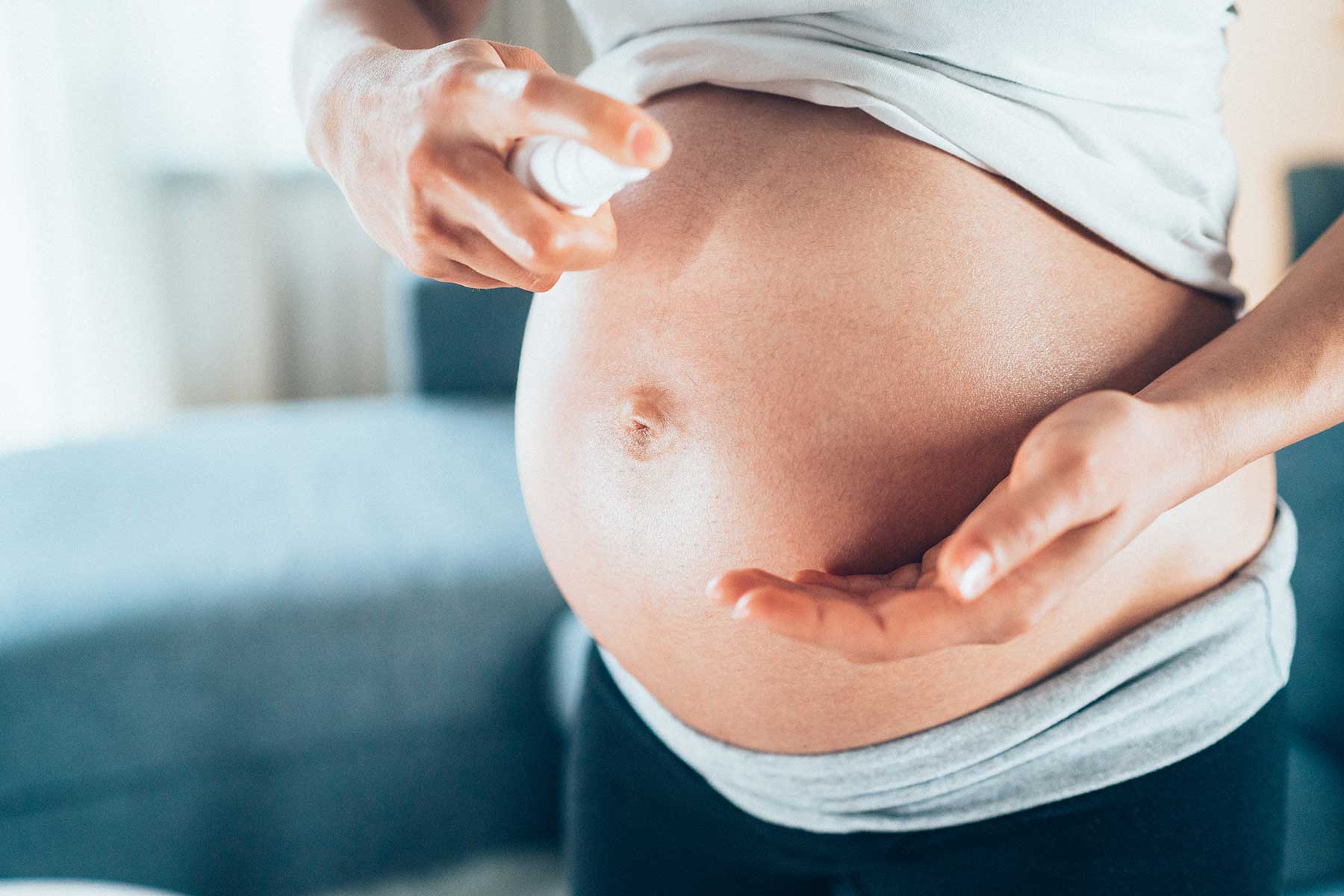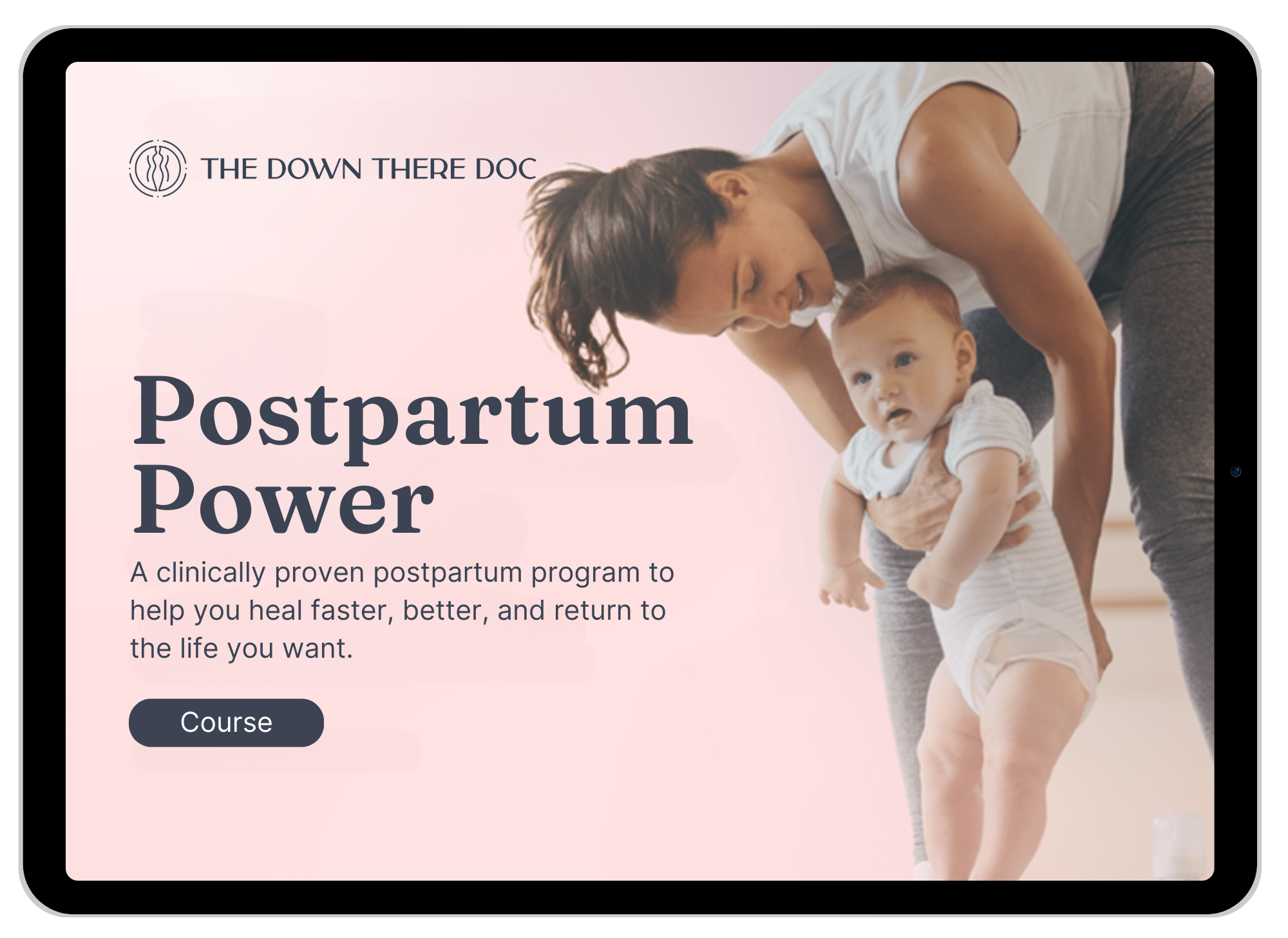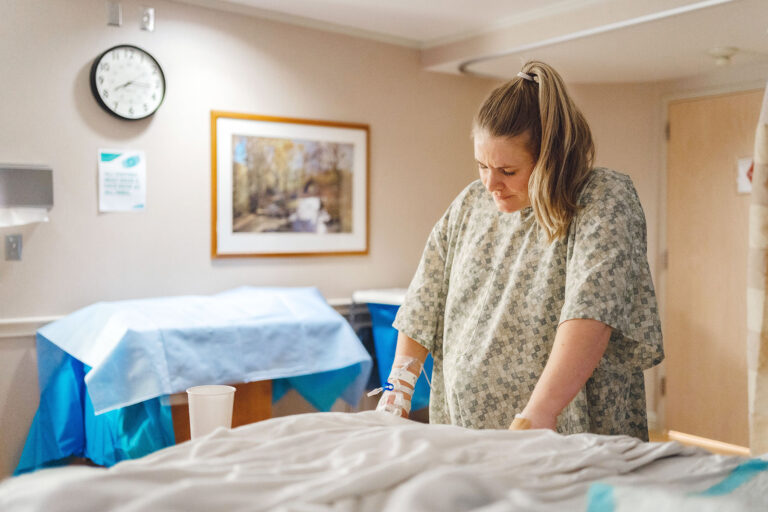What is a perineal massage?
Perineal massage is a manual technique that helps to physically prepare the tissue “down there” for delivery. It’s a way to help reduce the risk of significant tearing, trauma, or instrumental delivery (using instruments like forceps or a vacuum).
Perineal massage can be a very helpful tool when used properly and at the right time. Some medical providers don’t think there is any benefit to doing it, however, the medical literature does support it as a safe technique when done the right way, at the right times.
See Also
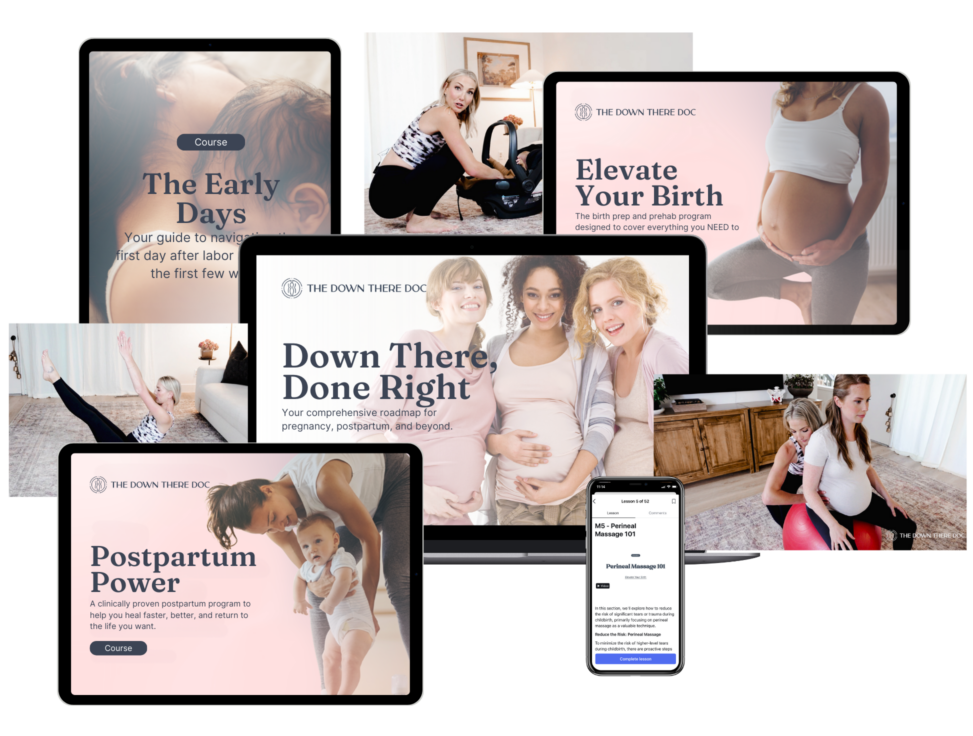
What are the benefits of Perineal Massage?
The benefits of performing perineal massage are two-fold. First and foremost it helps to physically prep the tissue for vaginal birth. Think about it like stretching a tight hamstring muscle. In order for us to fully straighten out our knee, sometimes we have to work on the flexibility and length of the hamstrings, right? The same principle applies to your pelvic floor, which is the muscles that surround the vagina.
The vaginal canal has to stretch, and those pelvic floor muscles have to get out of the way for that baby to come earthside. Perineal massage helps to actually stretch and soften the muscles so they have some practice, if you will, before the baby comes.
Now, will it stretch our pelvic floors to the amount that they will be stretched with birth? Of course not, but we don’t need to do that in order to reduce our risk of significant tearing or trauma. Sometimes just a little perineal massage, coupled with the right prep work will do the trick.
In my 13+ years of experience I’ve learned that mothers have the best outcomes when they feel prepared, educated, and are able to choose their preferences and have a say in what happens during delivery. Perineal massage is just one important piece of the whole picture of having a better birth.
When to start
I recommend people start perineal massage around 32 weeks pregnant as long as:
- Everything is going well with the pregnancy
- The mother isn’t on pelvic rest
- There is no active infection
- Her water has not broken
- And she is still engaging in sex or is cleared to have sex (engaging is a whole other story, am I right?)
Some will have to start earlier if there is a history of tearing or pain with penetration or previous scar tissue from surgeries or trauma.
Perineal Massage can be done on your own or with a partner
You can do this either way! Sometimes it’s helpful to have a partner perform so that you can focus on relaxing and lengthening the muscles. Some people may not have that luxury, however, and doing it solo is just fine!
If you’re having trouble reaching around that growing belly, you can use tools like a wand or vaginal dilator, or even a vibrator!
How to properly perform perineal massage
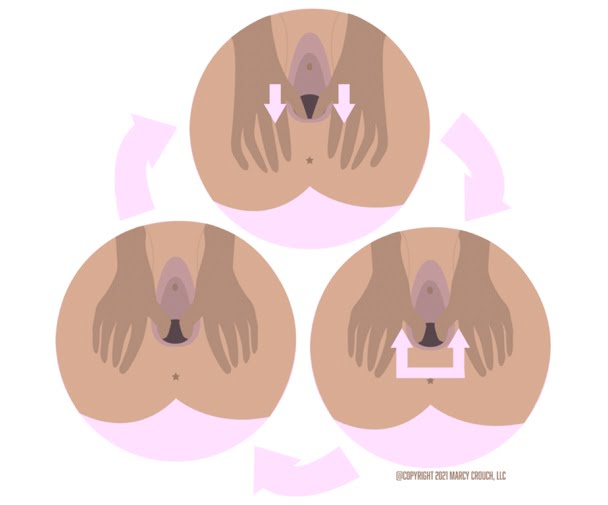
- Lie in a reclined position with your knees supported by pillow.
- Apply a good quality water-based lubricant (skip the fragrance or fire and ice lube).
- Insert your thumbs or fingers right into the opening of the vaginal canal, only going as deep as your first knuckle.
- Apply pressure down towards your booty, then sweep your fingers apart, GENTLY stretching the perineum and muscles in a “U” shape.
- Think of your vaginal opening like a clock, with 12 being the top by your pubic bone, and 6 being right above your bootyhole. Work in the 3-9 o’clock range with constant pressure.
- Practice deep, even breathing and releasing your pelvic floor muscles (no clenching mama!), even through the burning sensation. It will get better and easier. Think about creating space in the vaginal canal and even pushing out a little (gently, like you are slowly releasing a fart).
- Do this 3-5x/week for 15-20 minutes.
- Progress to using a dilator or vibrator and practice this in different positions such as side-lying, squatting, all-fours, and high kneeling.
If you are more of a visual learner or want to dive deeper, check out my free mini-course, Push Prep Crash Course: How to Save Your Pelvic Floor.
This 6-day mini-course only takes about 5 minutes a day and covers the basics of what your pelvic floor is and how it functions, how to perform perineal massage (with a demonstration), the best positions to push in during delivery, and a ton more!
References for this article:
Abdelhakim AM, Eldesouky E, Elmagd IA, Mohammed A, Farag EA, Mohammed AE, Hamam KM, Hussein AS, Ali AS, Keshta NHA, Hamza M, Samy A, Abdel-Latif AA. Antenatal perineal massage benefits in reducing perineal trauma and postpartum morbidities: a systematic review and meta-analysis of randomized controlled trials. Int Urogynecol J. 2020 Sep;31(9):1735-1745. doi: 10.1007/s00192-020-04302-8. Epub 2020 May 12. PMID: 32399905. Link
Azón E, Mir E, Hernández J, Aguilón JJ, Torres AM, Satústegui PJ. [Update on the effectiveness and evidence of ante-natal perineal massage]. An Sist Sanit Navar. 2021 Dec 27;44(3):437-444. Spanish. doi: 10.23938/ASSN.0976. PMID: 34703032. Link
Beckmann MM, Stock OM. Antenatal perineal massage for reducing perineal trauma. Cochrane Database Syst Rev. 2013 Apr 30;(4):CD005123. doi: 10.1002/14651858.CD005123.pub3. PMID: 23633325. Link
Ducarme G, Pizzoferrato AC, de Tayrac R, Schantz C, Thubert T, Le Ray C, Riethmuller D, Verspyck E, Gachon B, Pierre F, Artzner F, Jacquetin B, Fritel X. Perineal prevention and protection in obstetrics: CNGOF clinical practice guidelines. J Gynecol Obstet Hum Reprod. 2019 Sep;48(7):455-460. doi: 10.1016/j.jogoh.2018.12.002. Epub 2018 Dec 12. PMID: 30553051. Link
Goh R, Goh D, Ellepola H. Perineal tears – A review. Aust J Gen Pract. 2018 Jan-Feb;47(1-2):35-38. doi: 10.31128/AFP-09-17-4333. PMID: 29429318. Link
Kalichman L. Perineal massage to prevent perineal trauma in childbirth. Isr Med Assoc J. 2008 Jul;10(7):531-3. PMID: 18751635. Link

